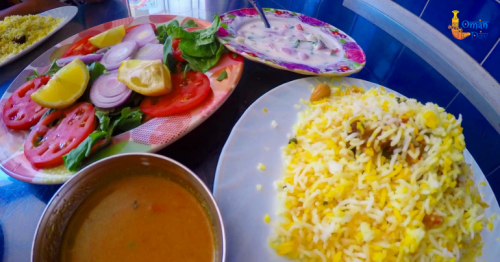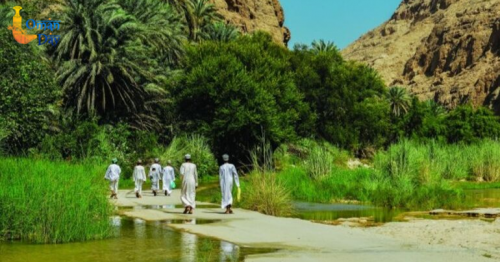10 Must See Sites In Oman
Sultan Qaboos Grand Mosque In Muscat
This radiant place of worship is a stunning masterpiece of architecture, design and spirituality. Made out of tonnes of Indian sandstone, the Sultan Qaboos Grand Mosque is one of the most beautiful architectural landmarks of the whole region, built before any of the other grand mosques. The courtyard has verses from the Koran etched onto the walls, while the mosque as a whole reveals Islamic art from all angles. The main hall is covered in dark grey and white marble decorated with Islamic art features such as geometric and leafy patterns.

The construction of the mosque took six years. The prayer carpet inside the mosque, which was handmade in Iran, itself took four years to complete and is said to be the second-largest single Persian carpet in the world, made up of up to 20 colors in different shades, all hued using natural dyes. Another interesting feature to see is the chandelier above the prayer hall, which was crafted in Germany and is said to be the second-largest chandelier in the world.
Tomb of Bibi Maryam in Qalhat
Qalhat is said to be Oman’s first capital and was once upon a time a great, prosperous city, trade hub and old port. It played an important role in the 14th and 15th centuries for the Kingdom of Hormuz and was an important stop on the Indian Ocean trade network.
Today, hardly anything remains of the great city of Qalhat except for one landmark, the tomb of Bibi Maryam. also known as the Mausoleum of Lady Maryam. Legend says that the tomb of Bibi Maryam was built by the King of Hormuz Bahauddin Ayez, or that her tomb is a site of a mosque that Lady Maryam built for herself, as her final resting place. At the peak of Qalhat’s glory, this tomb must have been a stunning, mystical place. Some people claim that just being around the tomb gives them a strange, mysterious feeling that makes them stare at the structure in awe.

Bait Al Zubair Museum in Muscat
Bait Al Zubair translates to ‘House of Al Zubair.’ Formerly a home, the site is now a private museum funded by its founders, the Zubair family. Opening its doors to visitors in 1998, the museum has an exquisite display of Omani artefacts dating back centuries. The museum offers various exhibitions running throughout the year and showcases great displays, with a mix of different cultural and historic artefacts such as old cannons, jewelery and artwork, all of which tell the history of Oman and the ties it had with the different civilizations around the world, from China, India and Persia to Ancient Rome and Greece. The museum also has a well-stocked library, and a falaj, which is an ancient water irrigation system that still plays an important role in Oman and its agriculture around the country.
tag: about-oman , top-10-things-to-do
Share This Post





